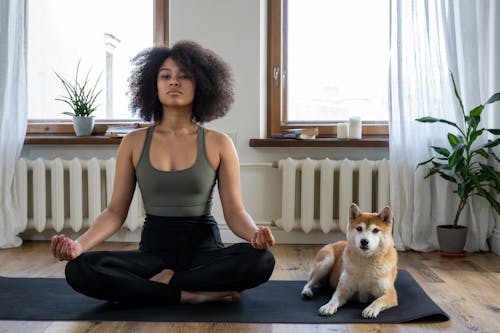
Endometriosis is a type of chronic pain that approximately 2 – 10% of women deal with. Learning how to cope with endometriosis is important because the pain can otherwise be debilitating.
Endometriosis is a very painful gynaecological condition where tissues similar to that which normally line the endometrium (or uterus) grow outside the woman’s uterus. The number one symptom of endometriosis is a pain in the pelvic area. Other symptoms include:
- Extraordinarily painful period cramps
- Nausea or vomiting due to menstrual pain
- Heavy bleeding with menstrual cramps
- Pain or discomfort during urination or painful bowel movements
If you don’t learn how to cope with endometriosis, the pain and other symptoms can impact your quality of life, your relationships and your ability to work. Studies show that women suffering from this condition lose an average of 10.8 hours of work per week, resulting in productivity and performance issues. You may also experience depression and anxiety, especially if the condition affects your fertility.
Endometriosis is physically, mentally, and emotionally challenging. Thus, you must take a proactive approach to figure out how to cope with endometriosis, manage the symptoms, and take care of your holistic health. Apart from popping a painkiller, there are other ways to deal with the associated pain brought on by endometriosis and have a higher quality of life. Below are some coping strategies to help you navigate life with endometriosis:

Heat
Heat can help you manage endometriosis pain. You can soak in a warm bath to get the healing power of heat or apply a heating pad to the painful area. Hot water bottles and magic bags (microwavable heating bags) also work. Apply heat for about 20 minutes and see if you feel better.
Pelvic Floor Exercises
Remember that the most common symptom of endometriosis is pelvic pain. Endometriosis causes pain in the pelvic area and affects your pelvic floor muscles. When these muscles are not in optimal condition, it can create a cycle of exacerbated pain. Pelvic floor exercises can strengthen the muscles and help you feel better. Squats and glute bridges, for example, strengthen the pelvic floor.
Modified Diet
A healthy diet may proffer some protection against endometriosis. Firstly, cut down excessive salt and sugar as this promotes bloating and leads to more pain. In addition, since endometriosis deals with inflammation, it would also be helpful to take anti-inflammatory food like leafy green veggies, almonds, fatty fish rich in omega-3, and fruits from the berry family.
Invest in organic produce because chemicals from pesticides, insecticides, and antibiotic growth hormones are a suggested risk factor for endometriosis. Moreover, increase fruit and veggie intake because meat encourages the production of prostaglandins, resulting in more estrogen. The higher estrogen levels present in the body promote thicker endometrial growth.
CBD
CBD (cannabidiol) is a natural pain reliever that works for many people who suffer with chronic pain. CBD is the main cannabinoid in non-intoxicating strains of hemp. CBD can help with pain and inflammation. For many people, CBD doesn’t start working until you’ve been taking it every day for about 2 weeks. This means that if it doesn’t reduce your endometriosis pain right away, you should give it a chance to start working. Add a drop or two of CBD oil to your morning smoothies, or drop it directly under your tongue. Many people have reported that CBD helped reduce their pain and stress levels.
Kick the Smoking Habit
If you smoke or are constantly exposed to second-hand smoke, find a way to get yourself out of the situation. Exposure to smoke can increase the incidence of period pain. In addition, it will exacerbate cramps because smoke reduces the oxygen supply to the pelvic area. If you don’t want to feel pain, you have to make sure all the cells in your body are nourished with O2.
Exercise Regularly
While some people who experience painful cramps think that exercise will exacerbate their pain, the truth is that exercise can help manage pain. When mastering how to cope with endometriosis, don’t underrate the potential of exercise. Moderate exercise will likely help alleviate the pain and discomfort. Furthermore, exercise can help you by reducing other endometriosis symptoms. Here’s why it is effective:
- Exercise encourages efficient blood circulation in the body
- Maintains a healthier flow of oxygen
- Carries nutrients efficiently all over your body
- Helps reduce stress
- Release endorphins in the brain, which make you feel good
Besides, studies show that women who engage in strenuous physical activity are 75% less likely to develop endometriosis than sedentary women. Those who actively feel pain during their periods can also find relief in yoga, as it strengthens muscles that can relax the pelvic floor.

Manage Stress Levels
Stress is a double-edged sword. Your endometriosis symptoms can worsen your stress levels. At the same time, your stress levels can be exacerbated by your condition. Will the cycle ever end?
Finding a way to manage your stress is vital so you can live a good life despite your condition. Use relaxation techniques to help you refocus your energy. You can try the following to reduce your stress:
- Meditation
- Deep breathing exercises
- Visualization
- Aromatherapy
- Massage therapy
- Acupuncture
- Counselling
Remember, endometriosis is manageable if you work diligently with your gynaecologist. However, if you are still experiencing persistent and severe pain that makes it difficult to keep your job, nurture relationships, take care of family or maintain your mental health, do not suffer in silence. Reach out to your doctor, because there might be a medication or coping strategy you haven’t tried yet. The best way to master how to cope with endometriosis is to experiment. Try to experiment with some of the coping strategies detailed in this article, and see what works for you. Don’t give up until you fall upon a strategy that helps you manage your symptoms.






